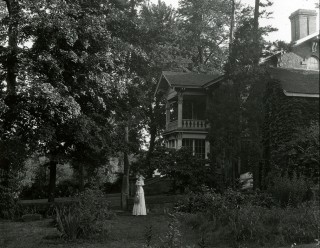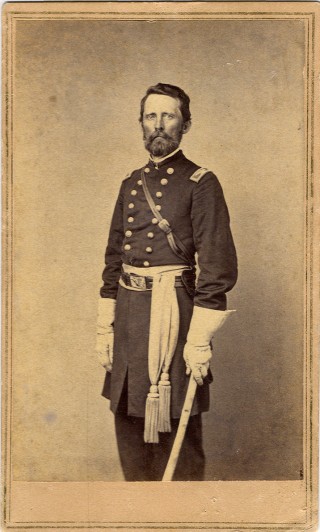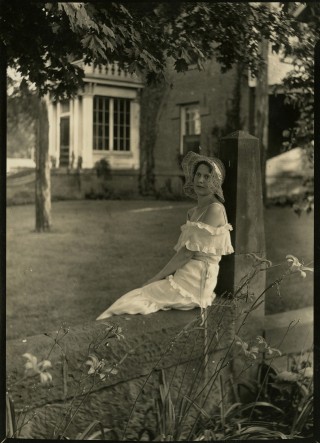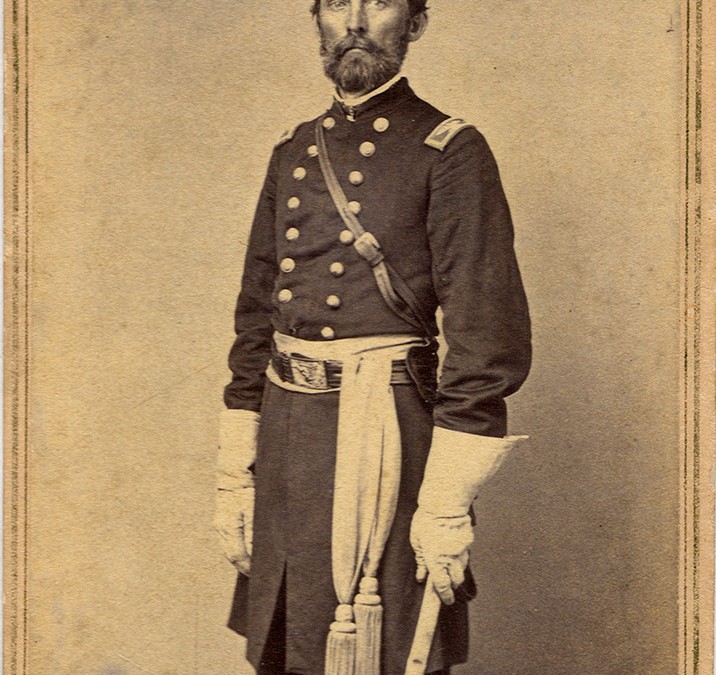This 1930 photograph shows a familiar Fayetteville landmark – Judge Lafayette Gregg’s house sits at the corner of Gregg and Lafayette streets. The home was being used for a photo shoot for Miss Arkansas Traveler, Daphne Dailey.

In 1930 the Gregg House at the corner of Lafayette and Gregg streets in Fayetteville was used for a photo shoot for Daphne Dailey, Miss Arkansas Traveler that year. The 1871 home was added to the National Register of Historic Places in 1974.

Colonel Lafayette Gregg in his Union dress blues ca. 1864. This carte de visite print is part of the Gregg Family Papers (MC1000) in Special Collections.
If it could be said that the University of Arkansas had a founder, it might be Judge Gregg, and this Saturday, Feb. 6, marks the occasion of his 191st birthday.
After moving to Fayetteville in 1835 at age ten, Gregg went on to represent the area in the Arkansas State Assembly, then as prosecuting attorney in the Circuit Court. He served as a Colonel for the Union in the Civil War, sat on the Arkansas Supreme Court, and eventually became President of the Bank of Fayetteville, all while maintaining a law practice in town.
Gregg was also instrumental in Arkansas Industrial University (now the U of A) coming to Fayetteville. He worked with his friend William McIlroy to use the farmer’s hill for the school, and Gregg donated 120 acres of his own land to the cause. Gregg personally oversaw the construction of Old Main, brick by brick, as the story goes. His home, built in 1871 just on the edge of the new campus, is now on the National Register of Historic Places. Gregg then served on the Board of Trustees from 1874 to 1883. His son Alfred was one of the school’s first graduates in 1876.
The photographs of the Gregg House in Fayetteville are part of the papers of the founder of the University of Arkansas School of Journalism, Walter J. Lemke (MS L541) in the University Libraries’ Special Collections. Lemke’s papers contain a wealth of documentation related to the history of the University and of the state of Arkansas, in addition to hundreds of historic photographs.

From late 1929 to 1955, the University Press Club elected a “Miss Arkansas Traveler.” The 1930 winner was Daphne Daily, pictured here with the Gregg House again shown in the background. All the winners through the years had worked on the staff of the paper. The tradition ended when the University Press Club was dissolved in 1955. The Walter J. Lemke Papers (MS L541) preserve several photos of Miss Arkansas Traveler winners, as well as hundreds of other photographs of University and Arkansas history.
To learn more about the Gregg family, pioneers of Northwest Arkansas, and the legacy of Lafayette Gregg, see the Gregg Family Papers (MC1000) also in Special Collections.
For more information about the thousands of resources preserving the history of Arkansas available through the University of Arkansas Libraries, contact Special Collections, specoll@uark.edu, or visit the department in Mullins Library.
